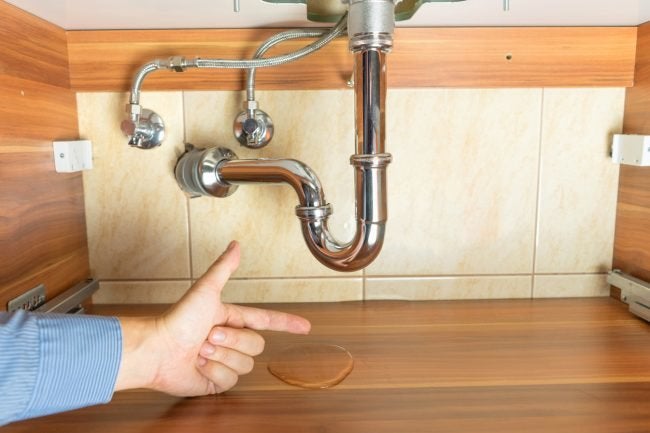Guide To Water Leak Discovery In The House
Guide To Water Leak Discovery In The House
Blog Article
The content which follows relating to Leaking water lines is really informative. Read on and draw your own personal results.

Early discovery of leaking water lines can reduce a possible calamity. Some small water leaks might not be visible.
1. Analyze the Water Meter
Every residence has a water meter. Checking it is a guaranteed manner in which assists you uncover leaks. For beginners, turn off all the water resources. Guarantee nobody will flush, use the tap, shower, run the washing machine or dishwashing machine. From there, most likely to the meter and also watch if it will certainly transform. Since no person is using it, there need to be no activities. If it moves, that shows a fast-moving leak. If you identify no changes, wait an hour or two and check back again. This means you may have a slow-moving leakage that might even be underground.
2. Check Water Consumption
If you detect abrupt changes, in spite of your consumption being the very same, it implies that you have leakages in your plumbing system. A sudden spike in your costs suggests a fast-moving leakage.
On the other hand, a steady rise each month, even with the exact same routines, shows you have a sluggish leakage that's likewise gradually escalating. Call a plumber to thoroughly examine your building, especially if you really feel a warm area on your flooring with piping below.
3. Do a Food Coloring Test
When it comes to water intake, 30% comes from commodes. If the shade in some way infiltrates your dish during that time without flushing, there's a leakage in between the storage tank as well as dish.
4. Asses Outside Lines
Do not neglect to examine your exterior water lines as well. Needs to water seep out of the link, you have a loosened rubber gasket. One tiny leak can squander heaps of water and surge your water costs.
5. Check and Evaluate the Situation
House owners must make it a routine to inspect under the sink counters and also even inside cupboards for any type of bad odor or mold development. These two red flags show a leak so prompt interest is required. Doing regular inspections, also bi-annually, can conserve you from a significant issue.
More notably, if you know your home is currently old, maintain a watchful eye on your heaters, hoses, pipelines and so on. Check for stainings and also deteriorating as a lot of pipelines and also devices have a life expectancy. They will certainly likewise normally weaken as a result of tear and wear. If you believe dripping water lines in your plumbing system, don't wait on it to intensify. Call a professional plumber today so you don't end up with a terrible mess in your home.
Early detection of leaking water lines can reduce a prospective calamity. Some little water leakages may not be visible. Checking it is a surefire way that assists you find leakages. One little leak can lose heaps of water and also increase your water costs.
If you believe dripping water lines in your plumbing system, do not wait for it to rise.
WARNING SIGNS OF WATER LEAKAGE BEHIND THE WALL
PERSISTENT MUSTY ODORS
As water slowly drips from a leaky pipe inside the wall, flooring and sheetrock stay damp and develop an odor similar to wet cardboard. It generates a musty smell that can help you find hidden leaks.
MOLD IN UNUSUAL AREAS
Mold usually grows in wet areas like kitchens, baths and laundry rooms. If you spot the stuff on walls or baseboards in other rooms of the house, it’s a good indicator of undetected water leaks.
STAINS THAT GROW
When mold thrives around a leaky pipe, it sometimes takes hold on the inside surface of the affected wall. A growing stain on otherwise clean sheetrock is often your sign of a hidden plumbing problem.
PEELING OR BUBBLING WALLPAPER / PAINT
This clue is easy to miss in rooms that don’t get much use. When you see wallpaper separating along seams or paint bubbling or flaking off the wall, blame sheetrock that stays wet because of an undetected leak.
BUCKLED CEILINGS AND STAINED FLOORS
If ceilings or floors in bathrooms, kitchens or laundry areas develop structural problems, don’t rule out constant damp inside the walls. Wet sheetrock can affect adjacent framing, flooring and ceilings.
https://www.servicemasterbyzaba.com/blog/how-to-detect-water-leakage-in-walls/

As a reader about Detecting hidden plumbing leaks, I imagined sharing that excerpt was sensible. Appreciated our write-up? Please share it. Help other people locate it. Thank you for your time invested reading it.
Report this page